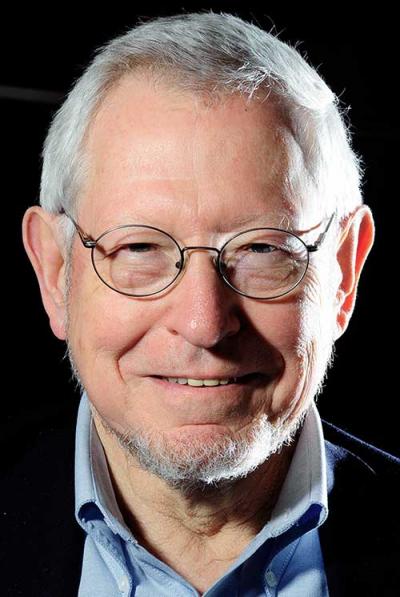

 I've been covering Cuban streetnets (local area networks with independent users that are not connected to the Internet) for some time. Reader Doug Madory told me about Gaspar Social, a new streetnet in Gaspar, a small town in central Cuba. Gaspar Social opened to the public last October and has grown quickly -- about 500 of Gaspar's 7,500 residents are now users. Streetnets are illegal in Cuba and the government has ignored some and cracked down on others... more
I've been covering Cuban streetnets (local area networks with independent users that are not connected to the Internet) for some time. Reader Doug Madory told me about Gaspar Social, a new streetnet in Gaspar, a small town in central Cuba. Gaspar Social opened to the public last October and has grown quickly -- about 500 of Gaspar's 7,500 residents are now users. Streetnets are illegal in Cuba and the government has ignored some and cracked down on others... more
Confronted with the rapid development of the Internet, the traditional network is facing severe challenges. Therefore, it is imperative to accelerate the construction of global network infrastructure and build a new generation of Internet infrastructure to adapt to the Internet of Everything and the intelligent society. From November 28 to 30, 2017, "GNTC 2017 Global Network Technology Conference" organized by BII Group and CFIEC, will see a grand opening in Beijing. more
 A Tipping Point for the Internet? Catching the precise moment of a tectonic shift in a global system as large and important as the Internet may be viewed as an exercise in the improbable. However, I point out in this summary that I think we are precisely in the midst of such a shift... more
A Tipping Point for the Internet? Catching the precise moment of a tectonic shift in a global system as large and important as the Internet may be viewed as an exercise in the improbable. However, I point out in this summary that I think we are precisely in the midst of such a shift... more
 At NANOG 79 earlier this month Craig Labowitz from Nokia Deepfield presented on the impact on the COVID-19 pandemic on Internet use. The approach to the analysis used real-time streaming telemetry from Communication Service Provider (CSP) backbone and aggregation routers, and the data analysis covered content provider networks in North America, Europe and parts of Asia. more
At NANOG 79 earlier this month Craig Labowitz from Nokia Deepfield presented on the impact on the COVID-19 pandemic on Internet use. The approach to the analysis used real-time streaming telemetry from Communication Service Provider (CSP) backbone and aggregation routers, and the data analysis covered content provider networks in North America, Europe and parts of Asia. more
A recent change in Google's network architecture has put a stop to a so-called "domain-fronting" feature that allowed services use Google's network to get around state-level internet blocks. more
 Nestled in the northeastern part of the United States is the small state of Vermont, the 14th State to join the United States in 1789. Its name comes from the French, in which 'vert montagne' means 'green mountain.' and it is known as the Green Mountain state. With only about 625,000 inhabitants, it is the 45th state out of 50 in size, and 49th of 50 in number of people, even less populated than Alaska. more
Nestled in the northeastern part of the United States is the small state of Vermont, the 14th State to join the United States in 1789. Its name comes from the French, in which 'vert montagne' means 'green mountain.' and it is known as the Green Mountain state. With only about 625,000 inhabitants, it is the 45th state out of 50 in size, and 49th of 50 in number of people, even less populated than Alaska. more
 There are many big questions in telecom these days, and this is one that's on my mind right now. Over the past few months, I've participated in events or briefed with leading vendors in our space, namely Avaya, ShoreTel, BroadSoft, Aastra, Metaswitch, Mitel, Interactive Intelligence, and this week Cisco. Every analyst has their own core circle of vendors they stay close to, but I'd say that's a pretty fair representation of who's driving telecom. To varying degrees, all of these vendors have a cloud story, and the more I hear it, the more I start to wonder what it really means. more
There are many big questions in telecom these days, and this is one that's on my mind right now. Over the past few months, I've participated in events or briefed with leading vendors in our space, namely Avaya, ShoreTel, BroadSoft, Aastra, Metaswitch, Mitel, Interactive Intelligence, and this week Cisco. Every analyst has their own core circle of vendors they stay close to, but I'd say that's a pretty fair representation of who's driving telecom. To varying degrees, all of these vendors have a cloud story, and the more I hear it, the more I start to wonder what it really means. more
 Global IPv6 deployment just passed a major milestone over the past few days when Google's IPv6 adoption statistics showed over 10% of users connecting to Google's sites coming in over IPv6. Considering that only two years ago I wrote here on CircleID about IPv6 passing the 3% adoption mark, this is a great amount of growth to see! If you look on the "per-country" tab of Google's stats you will see that in some countries deployment is much higher. For example, around 25% in the USA, Portugal and Germany, 31% in Switzerland and 44% in Belgium. more
Global IPv6 deployment just passed a major milestone over the past few days when Google's IPv6 adoption statistics showed over 10% of users connecting to Google's sites coming in over IPv6. Considering that only two years ago I wrote here on CircleID about IPv6 passing the 3% adoption mark, this is a great amount of growth to see! If you look on the "per-country" tab of Google's stats you will see that in some countries deployment is much higher. For example, around 25% in the USA, Portugal and Germany, 31% in Switzerland and 44% in Belgium. more
Much of Google's traffic yesterday appeared to be re-routed through Russia and dropped at China Telecom. The issue raises serious concerns as a possible traffic hijacking incident. more
U.S. Senators Mark Warner, a Virginia Democrat, and Marco Rubio, a Florida Republican, both critics of China, have urged Canada to consider dropping China's Huawei Technologies from helping to build next-generation 5G telecommunications networks. more
 The APNIC Blog has recently published a very interesting article by Willem Toorop of NLnet Labs on the relationship between Security Extensions for the DNS (DNSSEC) and DNS over Transport Layer Security. Willem is probably being deliberately provocative in claiming that "DoT could realistically become a viable replacement for DNSSEC." If provoking a reaction was indeed Willem's intention, then he has succeeded for me, as it has prompted this reaction. more
The APNIC Blog has recently published a very interesting article by Willem Toorop of NLnet Labs on the relationship between Security Extensions for the DNS (DNSSEC) and DNS over Transport Layer Security. Willem is probably being deliberately provocative in claiming that "DoT could realistically become a viable replacement for DNSSEC." If provoking a reaction was indeed Willem's intention, then he has succeeded for me, as it has prompted this reaction. more
 The Internet Society (ISOC) has been working with the African Union (AU) to facilitate the African Internet Exchange System (AXIS). This AXIS project funded by the EU-Africa Infrastructure Trust Fund and the Government of Luxembourg will help keep Internet traffic in Africa internal to the continent and avoid expensive international transit costs and delay latency in routing Internet traffic through other continents. more
The Internet Society (ISOC) has been working with the African Union (AU) to facilitate the African Internet Exchange System (AXIS). This AXIS project funded by the EU-Africa Infrastructure Trust Fund and the Government of Luxembourg will help keep Internet traffic in Africa internal to the continent and avoid expensive international transit costs and delay latency in routing Internet traffic through other continents. more
 An unprecedented cyberattack on the Canadian government also targeted Defence Research and Development Canada, making it the third key department compromised by hackers, CBC News has learned. ... While there is no definitive proof, of course, that China was behind these attacks, there is a lot of circumstantial evidence that points in that direction. China (allegedly) has a long history of engaging in espionage activities in order to gain access to information. In the United States, this is sometimes referred to as cyber warfare, but I think that cyber espionage is a better choice of terms. more
An unprecedented cyberattack on the Canadian government also targeted Defence Research and Development Canada, making it the third key department compromised by hackers, CBC News has learned. ... While there is no definitive proof, of course, that China was behind these attacks, there is a lot of circumstantial evidence that points in that direction. China (allegedly) has a long history of engaging in espionage activities in order to gain access to information. In the United States, this is sometimes referred to as cyber warfare, but I think that cyber espionage is a better choice of terms. more
 ARIN deployed a series of enhancements to its Whois-RWS service today. This includes enabling CIDR support and IPv6 lookups in the search box on the web page, provided plain text rendering of lists of ASNs and networks on the web - plus enhanced CIDR query matching on WHOIS port 43. more
ARIN deployed a series of enhancements to its Whois-RWS service today. This includes enabling CIDR support and IPv6 lookups in the search box on the web page, provided plain text rendering of lists of ASNs and networks on the web - plus enhanced CIDR query matching on WHOIS port 43. more
 If you haven't been reading the news of late, venerable anti-spam service Spamhaus has been the target of a sustained, record-setting Distributed Denial-of-Service (DDoS) attack over the past couple of weeks... Of course, bad guys are always mad at Spamhaus, and so they had a pretty robust set-up to begin with, but whoever was behind this attack was able to muster some huge resources, heretofore never seen in intensity, and it had some impact, on the Spamhaus website, and to a limited degree, on the behind-the-scenes services that Spamhaus uses to distribute their data to their customers. more
If you haven't been reading the news of late, venerable anti-spam service Spamhaus has been the target of a sustained, record-setting Distributed Denial-of-Service (DDoS) attack over the past couple of weeks... Of course, bad guys are always mad at Spamhaus, and so they had a pretty robust set-up to begin with, but whoever was behind this attack was able to muster some huge resources, heretofore never seen in intensity, and it had some impact, on the Spamhaus website, and to a limited degree, on the behind-the-scenes services that Spamhaus uses to distribute their data to their customers. more